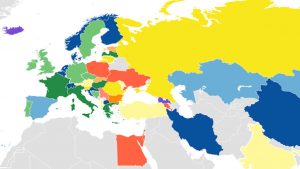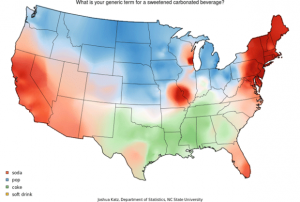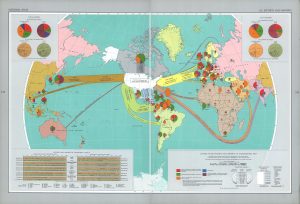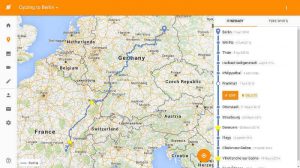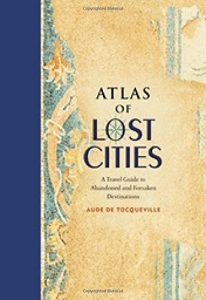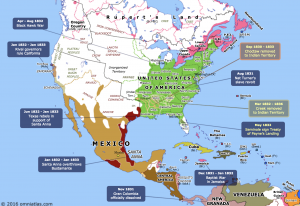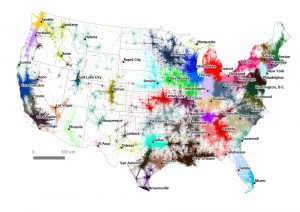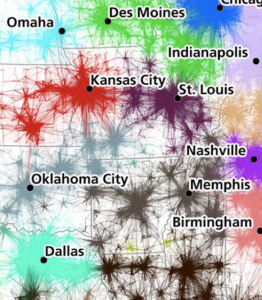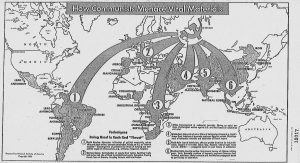Have you ever judged someone based on how someone similar to them has acted in the past?
Oh, yes. Yes, you have.

With its massive mélange of different cultures and backgrounds, it’s no secret that stereotypes exist in the United States. Whether it be stereotyping based on gender, race, occupation, or what, the practice of categorizing an entire group based on a few peoples’ actions has become a societal norm. Although stereotypes are often created by people outside of the group being judged, people on the inside can stereotype themselves as well. In Pieter Levels creation, Hoodmaps, participants do just that. The maps are completely run by the citizens who live in particular cities, causing people to be creators of their own stereotypes. However, this raises a few questions. Does everyone agree on these categorizations? Does this information serve to protect specific people’s interests? And, how do stereotypes vary from city to city?

“Hoodmaps” is a completely interactive site that allows users to explore cities based on the people who live there. This shows just how much maps have evolved over the years. In a society with more communication and technology, it is easier to make maps that people can participate in. Unlike a typical map, these maps are less about geography and more about symbols. Pieter Levels came up with the idea in 2015 when his friend asked him where she should go on her visit to Amsterdam. To answer her question, he drew her a map.
The purpose behind creating this map was to allow people to find original and local places to visit when entering a foreign city. Level explained that people often fall into the trap of only visiting the tourist based locations and missing out on the genuine experience of becoming immersed in a new culture.
Each city on Hoodmaps is separated into six color-coded categories: hipsters, rich, tourists, suits, “uni” (students), and “normies. Users are also able add tags if they feel like the city needs another description that goes beyond the categories. Because the map is based on GPS, one can look up any country in the world. For me, I enjoyed looking through the map of my hometown and seeing what stereotype my neighborhood falls in. I find it interesting how the map uses humor to engage its audience. However, many of the jokes are specific to people who live there and can understand. This creates a problem because what’s funny to some people could be insulting to others.
My interest in this map lies in its irregular projection. Unlike a typical map, this map solely relies on design and color to depict various cities. Simply by looking at the level of color in each city, the reader is able to determine what type of people live there and where exactly they live. I am also interested in the fact that the map is entirely interactive. Although this allows for a fun way to design maps, it definitely raises a few issues. Because the map is relatively new, there is a lack of participation and unbiased representation. This makes the maps skewed toward the interests of only a few contributors. And, even if there were many people participating, the map would still be limited to only those people’s opinions. Whether this was the intention or not, this design gives people the opportunity to stereotype negatively. For example, stereotyping someone as a hipster could be unwanted and people could be offended. Another problem with the map is the limited number of categories. With only six stereotypes, not everyone will completely fit into these categorizations. As a citizen of Baltimore, I noticed that my city’s map was not entirely accurate. These stereotypes mostly resonate with what white neighborhoods look like. Speaking from experience, I can tell you that downtown Baltimore is not exactly “hipster’ or “suits.” It is ravaged with drugs, unemployment, and poverty. However, there is not a category for that.
When Levels created this map, he was more interested in creating a startup than depicting a completely accurate map without flaws and distortion. But hey, who can really even do that anyway? Sure, he is not a cartographer. But, he is an entrepreneur, one with an eye for design. In today’s society, anyone can make a map. It is no longer only up to cartographers to depict reality. This creates a completely different experience for the reader of the map, one that’s more raw and relatable.
Sources:
https:/hoodmaps.com
https:/www.citylab.com/life/2017/08/hoodmaps-sterotype-your-city-hipsters/538218/

